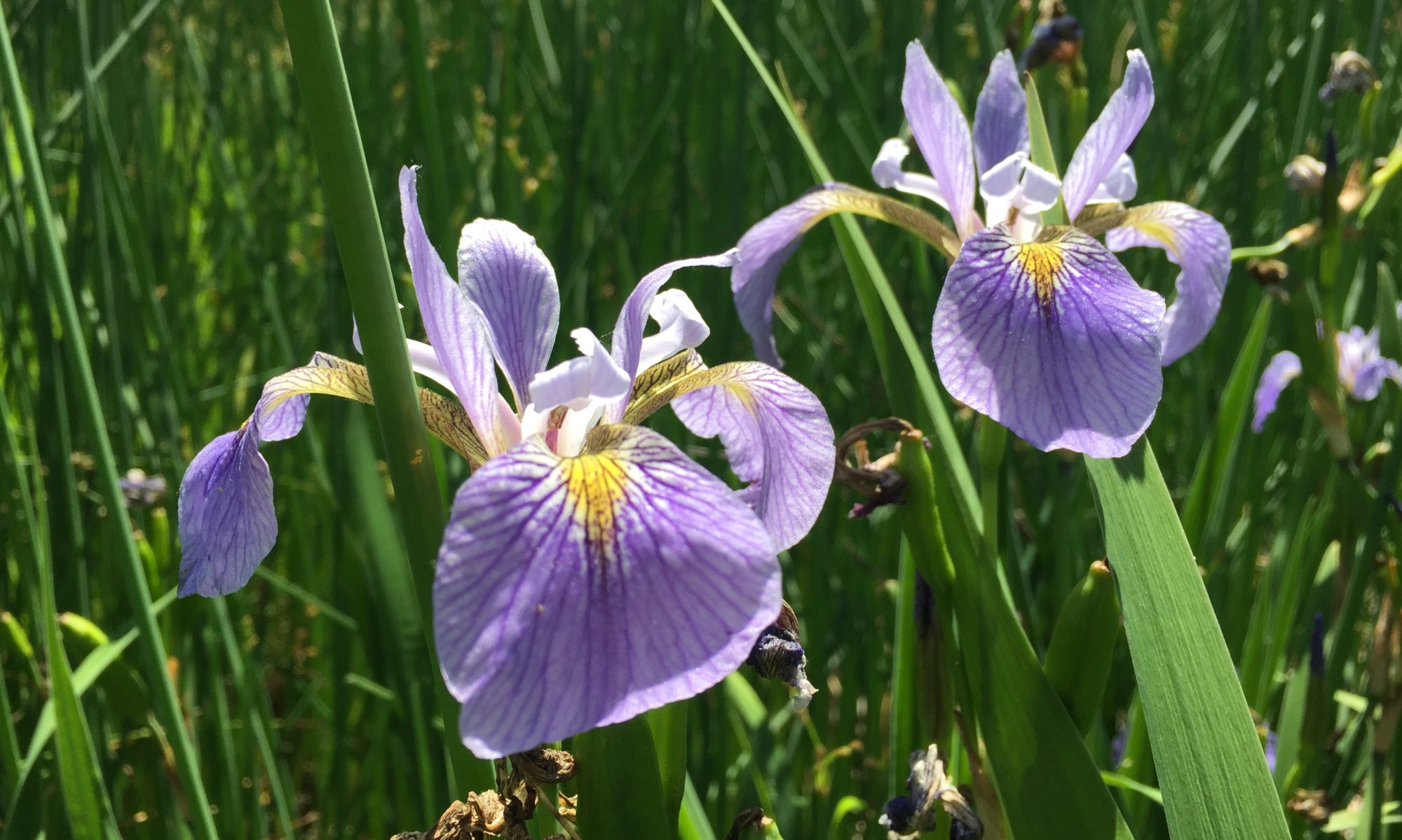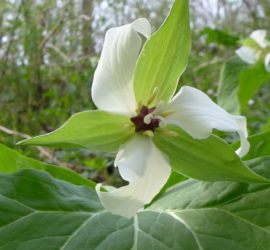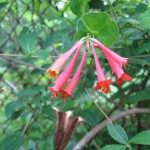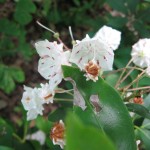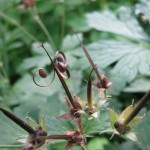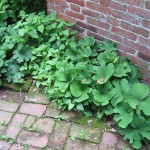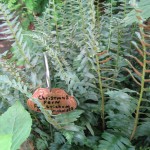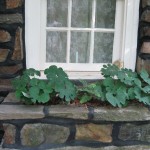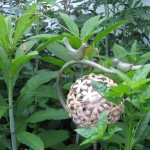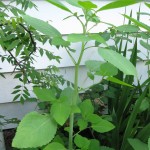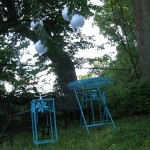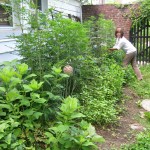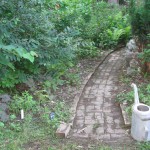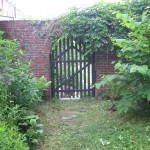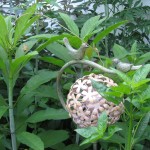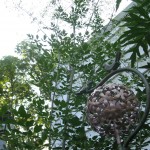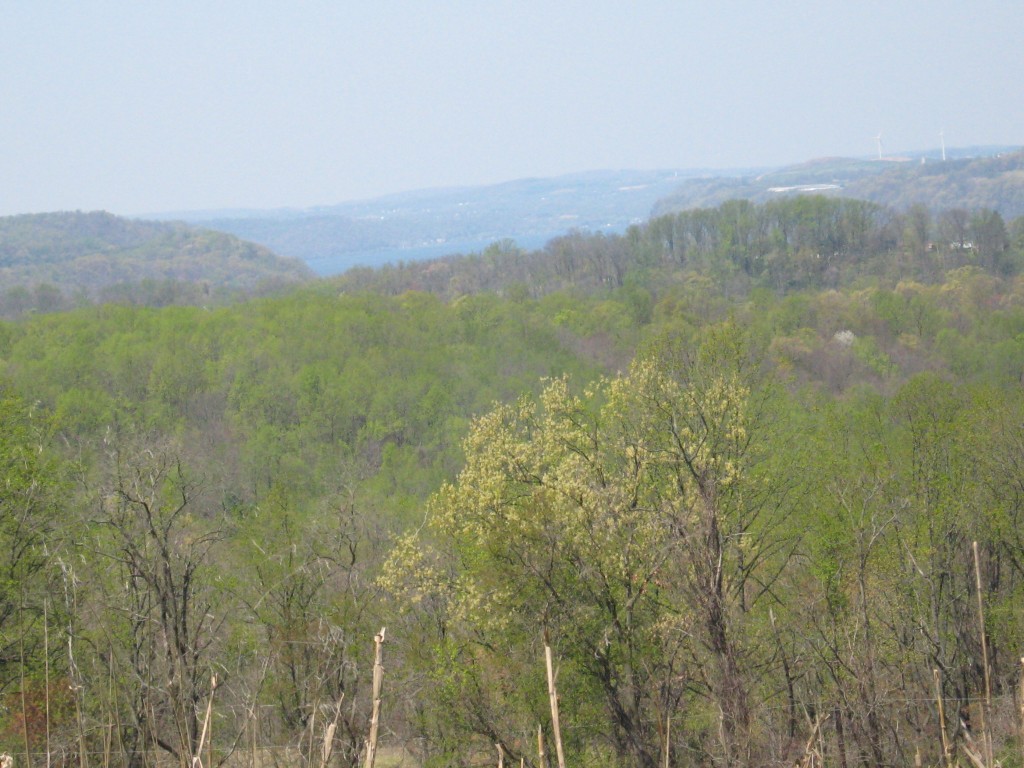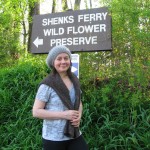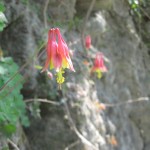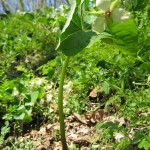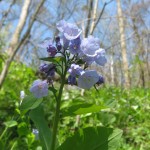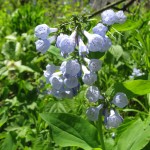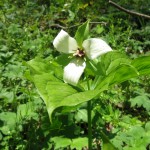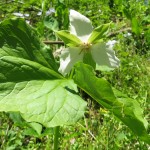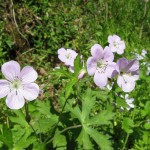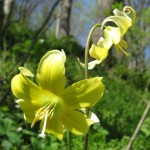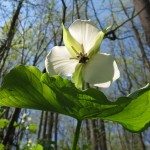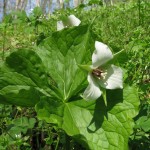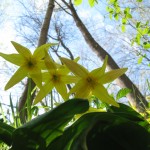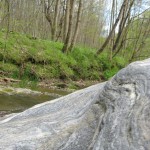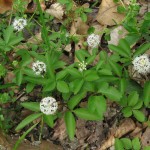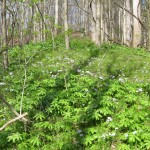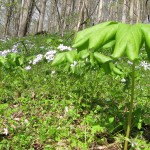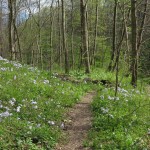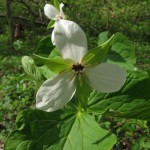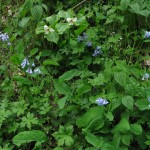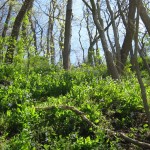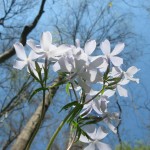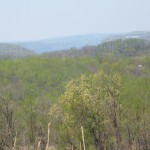THE BACKYARD HAS FINALLY BEEN TRANSFORMED FROM A NEGLECTED MENAGERIE OF NOXIOUS INVASIVE WEEDS INTO A PLEASANT AND INVITING SANCTUARY OF NATIVE HERBACEOUS PLANTS, SHRUBS AND TREES AFTER THREE YEARS OF WORK
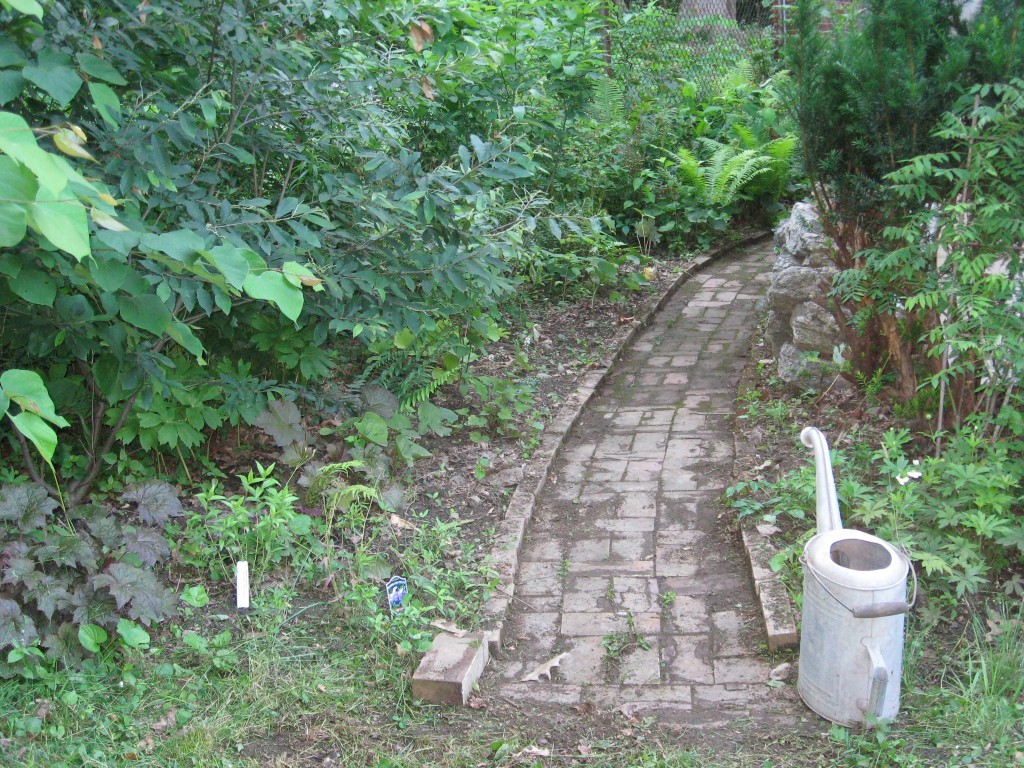
Welcome to our backyard! This neglected piece of Philadelphia shares a border with Morris Park, which is on the other side of the fence. For years inappropriate plantings have been escaping this yard into the park, and  invasives from the Park, escaped from other inappropriate plantings have found their way into the yard.  What a mess!  Noxious weeds such as Mile- a-minute, Multiflora Rose, Burning Bush, English Ivy, Porcelainberry, Japanese Stiltgrass and Garlic Mustard. Even the native plants were out of whack.  Violets, Poison Ivy and Pokeweed  were running rampant.  Non native garden plantings, not considered noxious weeds were showing signs of aggressive growth such as Rose-of -Sharon and Snow drops.
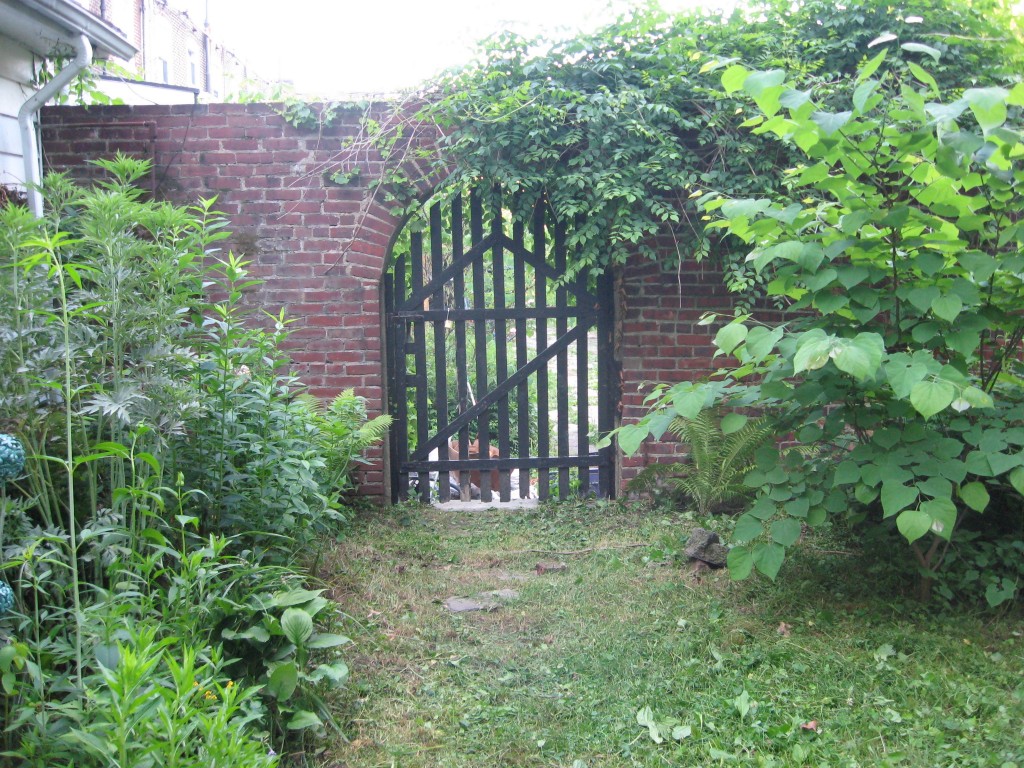
We tilled the soil and planted all native in the backyard over the last 3 years, and have been weeding out the non-native all along. Isabelle created a garden plan that involved an oval shaped area of grass surrounded by beds of plantings. Â The fact that the property directly borders Morris Park, a natural woodland area, has further inspired us to stick with native plants, especially ones native to the region of Philadelphia. Whatever we plant will eventually escape into the Park, and we would like that to be a plant that will not harm the natural area. Ideally, any plant we put in our yard would have originated from a local seed source, and we do try to search these plants out. Â Because of its proximity to a natural area, our yard is something of an extension of a natural area, yet it is a garden.
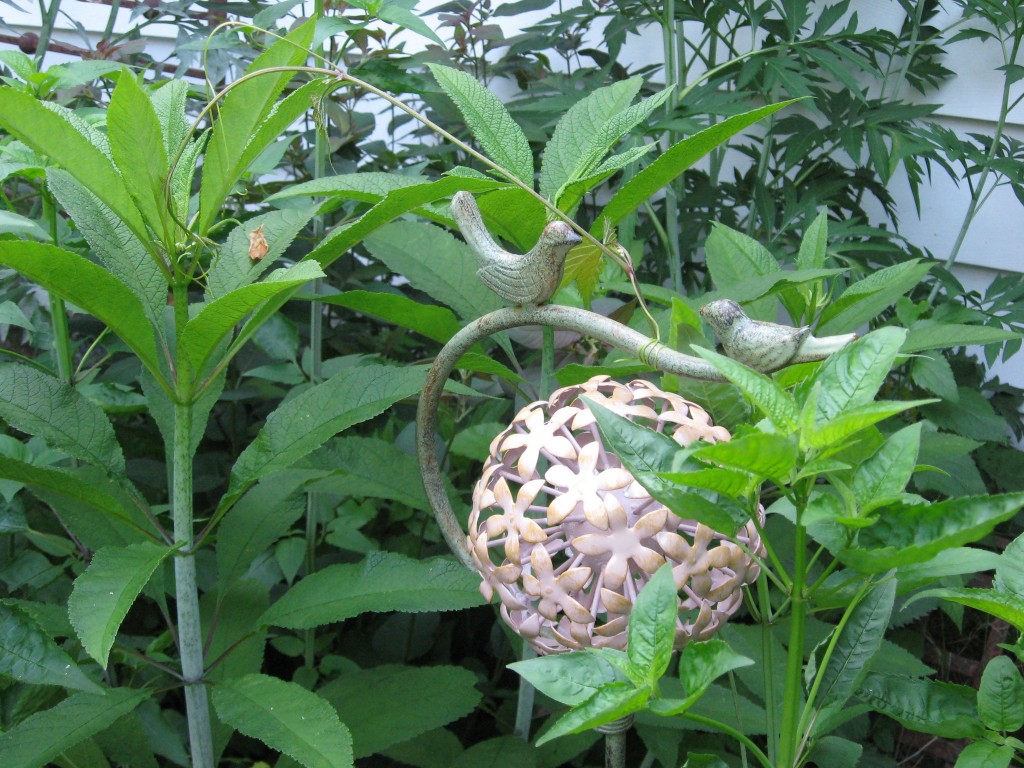
Here we have confronted the situation at hand: we have this unique situation of bordering a natural area, and being enthusiastic about native plants, and wanting to create a beautiful garden in an area infested with invasives.
We found that by being limited to the native plants of Philadelphia, we were at an advantage: our clearly defined scope allowed us to focus on our planting choices, and the sun exposure and soil conditions gave us even more focus. The limiting choices of plant material has actually enhanced our sense of garden design. It has given it a purpose; an ecological sensibility and the challenge of a horticultural translation from raw nature to an ornamental garden setting.
There is an enlightenment to be had from the restrictions of native plants that only grow in this very specific region.  We can focus on these specific plants, we can learn their habits, latin names and their place in the botanical classification, where they become members of a global family of plants that go back millenia. Suddenly we realize that we are participating in nature itself, that we are attuning ourselves to the botanical evolution of Southeastern Pennsylvania, we are truly embracing the sense of place, the home of the plants we choose, we are becoming involved as closely as possible to the millions of years of  botanical evolution that have occurred right at our doorstep.  What an amazing breakthrough!
Our sense of time has been transformed. We go out into the park and take close notes on the plants just growing, and we see them as the genetic blueprint of our natural lands, the area of the world we inhabit. We want a garden in our yard, we want to celebrate these local, indigenous plants, to highlight them, to conserve them, to share them, exalt them above the introduced versions, the aliens, the ones that are are inappropriate to our place. We want our sense of place to be reaffirmed and we want to have a grasp of our sense of time, the years, the seasons, the many skies that pass over us, that we are somehow a part of this natural phenomenon.
Here, we have a chance to participate botanically in the world of time and the immediate sense of place, here in Overbrook, West Philadelphia, Pennsylvania, here and now, we watch our plants grow and flower, and we ponder over the red, tubular flowers and the Hummingbirds that visit hourly, the moths and bees, the bright yellow flowers of the Sundrops, the Oenothera fruticosa, and we really feel our sense of place and time in our little spot in the world, our small urban garden in West Philadelphia. These plants we have chosen, guided by such scientific volumes as the The Vascular Flora of Pennsylvania, an Annotated checklist and Atlas, are the plants of our place. These are the plants that tell us where we are in the world, they tell us where the sun is, the rainfall, the soil conditions, where the nearest stream or wetland area is, or where the nearest tree is, how high in elevation, what the weather is.
We started with the books and have just gone ahead and planted them and watched them grow or die.  The garden is a place where we  have been trying to learn about nature first hand, in a semi controlled setting. We have watched our plantings wither and wondered why.  We have watched other plants flourish with great delight. The native plant garden has captured us emotionally, we are made happy by the success of a species and made sad by the failures of another. Its a ground of learning, a new territory of exploration.
The idea of a garden being a place of botanical exploration is ideal. We recommend this journey to be one of native plants to your region. limitations, especially ecological ones, will prove to be the most rewarding. Putting boundaries on enlightenment may seem counterintuitive at first, but when we can grasp a solid sense of place by our restrictions, and really feel that we are somewhere, and this somewhere is magnificent and is the place, then we are enlightened.
We dream of visiting other parts of the world,such as the mesic forests of central China, where we can see the Tree Of Heaven, the Ailanthus altissima, growing naturally in its habitat. Â This tree is a noxious weed in the U.S. and in western Europe. It is a horribly problematic tree, but to see its native habitat could give us a sense of global place; will we understand better the value of our own habitat, our micro region, our garden?
To us the garden is more than a place we can kick off our shoes and  rest under the canopy of a nice native shade tree and appreciate the beauty of nature, and see the flowers of our plantings we have worked so hard to create.  The garden is a place of learning, an ongoing adventure of questions asked and answered.
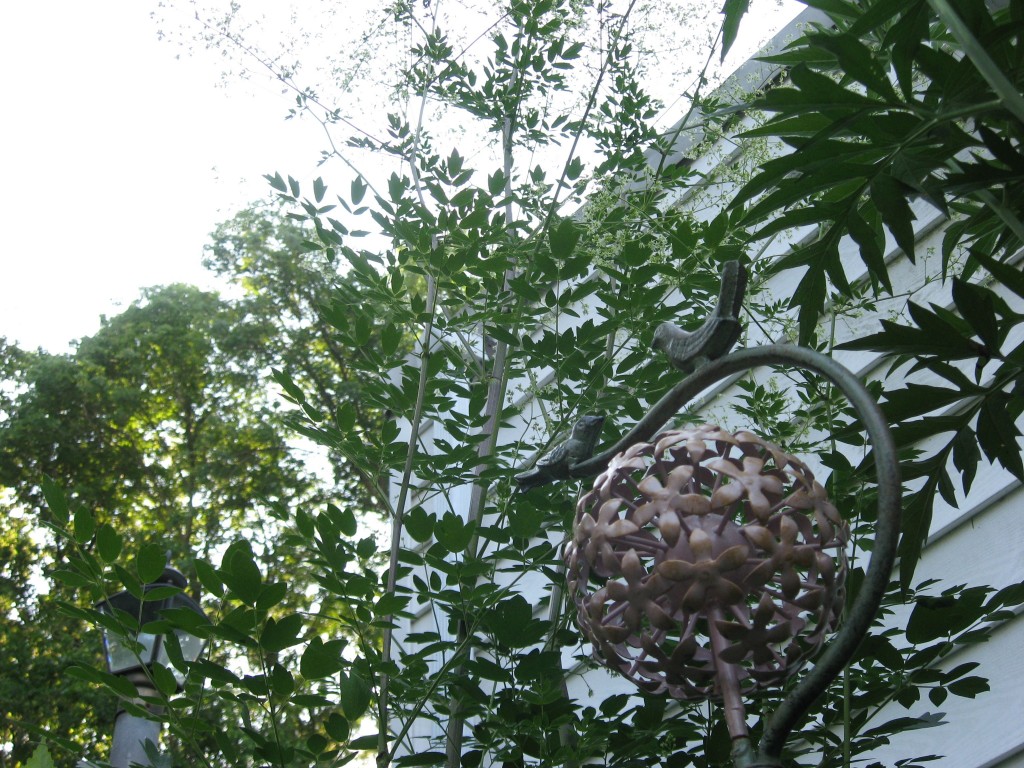
text
